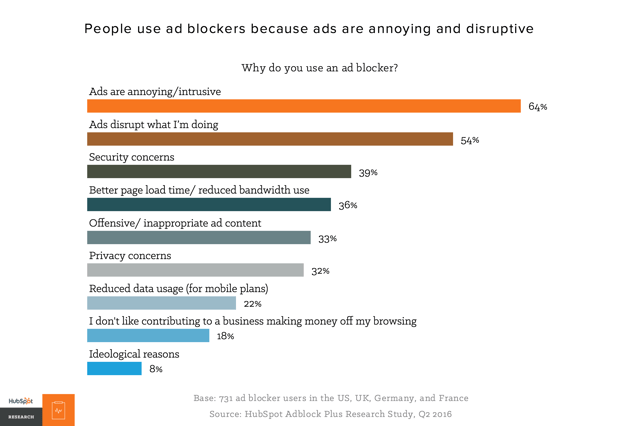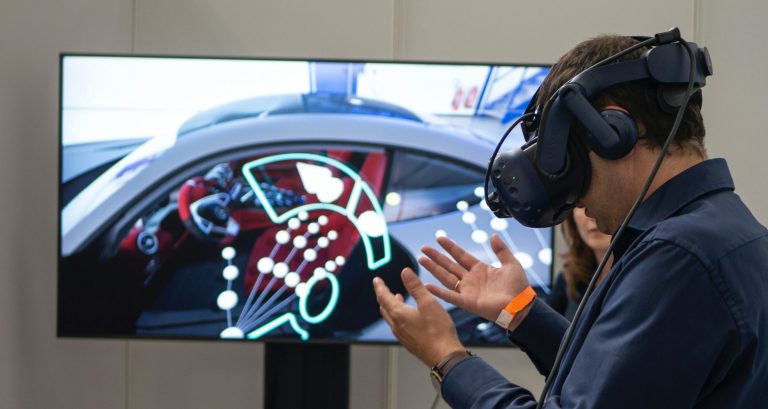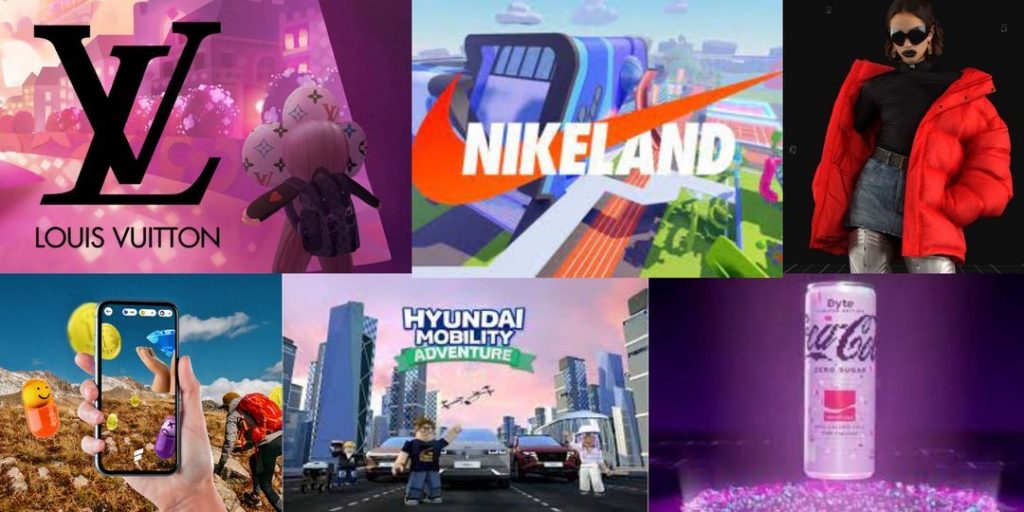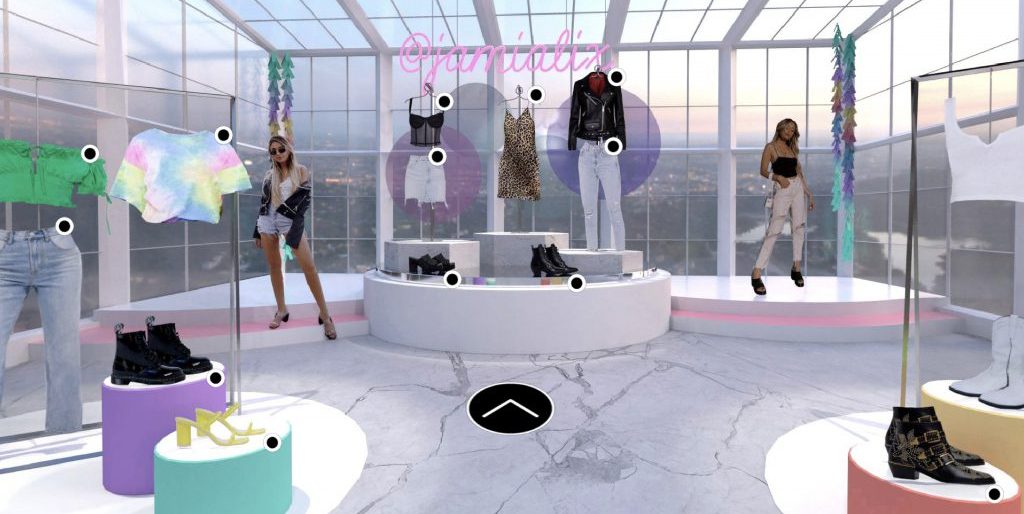The Metaverse has grown astronomically fast. But that doesn’t mean it’s just a trend. It’s had a meteoric rise from barely being heard of to being at the tips of everyone’s tongue in a mere 3 years. Everyone from the biggest venture capitalists to armchair cultural critics have been zeroed in on this phenomenon. And for good reason. What websites were to the 21st century so far, is what Web3.0 and the Metaverse will be to the coming decades. It will revolutionize every aspect of commerce, culture and communication forever.

One example of this is the way the Metaverse has been revolutionizing consumer culture. From virtual fashion weeks to Metaverse stores and branded concert experiences, things are changing fast. The metaverse offers the unique opportunity to serve a customer with not just a product or service but with a completely immersive 3D branded experience. Branding and advertising already went through a seismic change under Web2.0. Things moved from TV spots and brochures to social media ads in a flash, and the ‘older’ technology was rendered almost obsolete. This is the second transformation.
People Hate Ads
Users are sick of being exploited. Particularly by Big Tech. This is the problem that created the massive vacuum that Web3.0 was able to fill. Users have been growing more and more weary with each year of having their data farmed and used to serve them ads. Consumers are more wary of advertiser’s techniques and don’t appreciate seeing their user experience being interrupted by ads. Newer generations are the most savvy and suspicious to date, as well as a rapidly growing consumer class.

This is the problem Web3.0 and the Metaverse seek to solve. How can one build an environment where businesses and brands can function but consumers and users can trust that they are being treated fairly. Web3.0 is the change from unwelcome, interruptive advertising to immersive, content-based brand experiences.
Making Branding Human
The Metaverse integrates culture, subjective experience, and commerce like never before. You’re not just getting served a pop-up ad, you’re walking down the street and checking out the storefronts that seem interesting. You’re not watching a new tech unveiling video, you’re walking to the townsquare and playing around with a perfect simulation of it.
This turns branding, marketing, and advertising into an entirely new challenge. This is not just a question of metrics and data anymore, it’s far closer to behavioral economics. Taking into account people’s human tendencies, weaknesses, irrationalities, and interests to create an experience that they feel is natural, that they enjoy.
Leveraging Metaverse Branding
Table of Contents
Creating Experiences
The Metaverse, and Web3.0 at large, are all about the user’s experience. Simply pushing products and straightforward advertisements won’t cut it. The challenge is to create immersive, branded experiences that make the user interested in the brand itself rather than any particular products.
The leading examples of this approach are fashion brands like Gucci and Nike that create visual experiences, games, and Metaverse adventures. These may include opportunities to unlock or purchase digital collectables (NFTs) from the brand, or may simply take the user through a narrative or audiovisual experience.

There are many types of virtual experiences a brand can create on the Metaverse. Which one is best depends on the product, the target consumer, and the KPI they are focusing on. Some options include:
- Virtual Stores: Clothing companies (high fashion and mainstream) are benefitting from virtual stores. Customers can try on products, buy virtual goods for their avatar, or purchase real-world counterparts.


- Meet the Brand: To build a relationship with the customer, brands can create virtual tours of factories, supply chains etc. Attaching faces and places to the products promotes brand loyalty and creates a high value experience for the user.
- Immersive Art Experiences: This is generally what people think of when they think of Metaverse experiences and for good reason. These kinds of events, that focus on the quality of the experience rather than overt branding or sales, are key in building hype. This could be art simulations, concerts or even open-world games.
Collectables
Of course, branding cannot stop before converting to sales. However, again, things are very different on the Metaverse. As with normal apps, people are reluctant to leave the platform they’re on to make a purchase elsewhere. Therefore, the shopping experience has to be tied to the Metaverse, and ideally, the product must have a virtual component to it.
This is where NFTs or Non Fungible Tokens come in. An NFT is a digital asset, generally purchased through cryptocurrency. What makes it special is its uniqueness – each NFT comes with a 12 digit code proving that it is the entirely unique property of its owner. This technology lends itself wonderfully to collectables.

Collectables in the Metaverse are generally digital assets that users can purchase or win in-world, and display virtually. These are genuine branded products that generate real revenue for the brand. Once again, the most successful examples are fashion brands that have created NFT collections for those who want their Metaverse avatar decked out in the latest styles. Other companies, car manufacturers like Ferrari, restaurants like McDonalds and Starbucks are also entering the fray.
The secret is to find a way to mesh your product with the technology in a way that makes it interesting to purchase and cool to own. Collectables also help to create hype in a more direct manner. Limited drops and barriers to purchase mean the product becomes an exclusive badge of the insider. Like hype, exclusivity is its own currency in the Metaverse.
Community
Web3.0 is a decentralized internet. This means, instead of users only having relationships with websites or brands, the focus is on their relationships with each other. New ventures like the Bored Ape Yacht Club etc. show this difference – brands are no longer targeting individual consumers but community bases.

This is why exclusivity becomes so important. A product is not just a product, but a kind of uniform – a way to show you belong to a certain community. Creating limited collectables drops is one way to foster this sense of community. Another is to reward time spent rather than just money spent. This means giving rewards such as tokens or collectables to users who spend more time in brand experiences, worlds or otherwise interact with the brand more. Creating Proof of Purchase receipts that work as early bird passes or discount codes also helps people feel invested and included in the brand.
Essentially, the goal here is to make the user’s engagement with the brand feel as voluntary as possible, unlike traditional marketing does. While the ROIs may not be as immediate, the transformation of a brand’s reputation and the creation of a consumer community is very difficult for competitors to replace.
Gamification
Another way to create a fun, branded experience is to lean into gaming. The Metaverse, since its inception, has always been linked to gaming and the surrounding community. This is because games create the kind of barrier described in the previous section that rewards time and skill of the consumer, rather than just money. It makes the relationship between a brand and a user seem less transactional and more rewarding.

Several studies have proven the effects of gaming and the dopamine it provides on human brains, connecting this feeling of achievement with your brand and its products becomes an easy way to build hype and increase demand.
This can function in many ways. Most obviously, creating branded games which give different levels of rewards such as discount codes or collectables. However, there are also smaller ways to integrate the gamification principle. For example, creating micro-currencies that reward repeated interaction with a brand in the Metaverse and can be traded for rewards. Another example is allowing users to customize their own colourways etc., with rare options being more exclusive. This again, allows users to look at the products as more than just goods, but self-expression.
Product Placement
This captures the principle of branding in the Metaverse. Branding should either be an experience on its own, or a seamless and subliminal part of another experience. Product placement is the latter approach. It can be very successful when done well as automobile manufacturers and fashion brands have proven. The most popular example is games such as Fortnite etc. feature branded skins that users fight to unlock.
The Metaverse is in need of assets to fill it up, and create a lifelike experience. In short, it needs products. At its best, this is branding at its most invisible – users cannot see the intervention of the brand in their experience and rely on other users as indicators of what to buy. At its worst, however, this can be jarring, annoying, and intrusive – all the things wrong with Web2.0 branding and advertising.
The key is to find the platform, avenue, method, and placement that works specifically for you, your brand, its products, and consumer base.
Transforming Branding
Brands that have found success in the Metaverse have become viral constants on social media, and benefit from higher engagement, sales, and image than competitors. Metaverse branding isn’t an easy, trendy play. With some creativity, a willingness to experiment, and a personalized approach, it could transform the reputation of a brand completely, overnight, forever.

However, since with Metaverse branding you are playing for a consumer’s trust, time, and loyalty, great care must be taken. Choosing the right platforms, partnerships, and assets will be of utmost importance for brands looking to bask in the Metaverse glow. Winning trust and that elusive hype, is all about understanding human behavior and playing to it from within your brand’s philosophies and aesthetics.
This may seem daunting, expensive, or even alien. This is because it’s the future. As early-adopters across sectors have proven though, a Metaverse presence is an investment well worth making.

